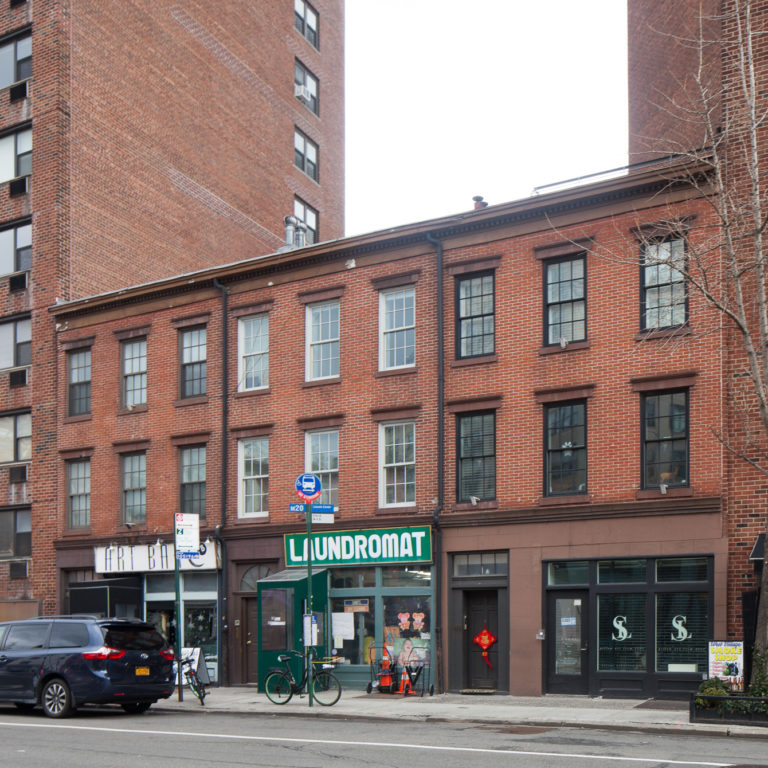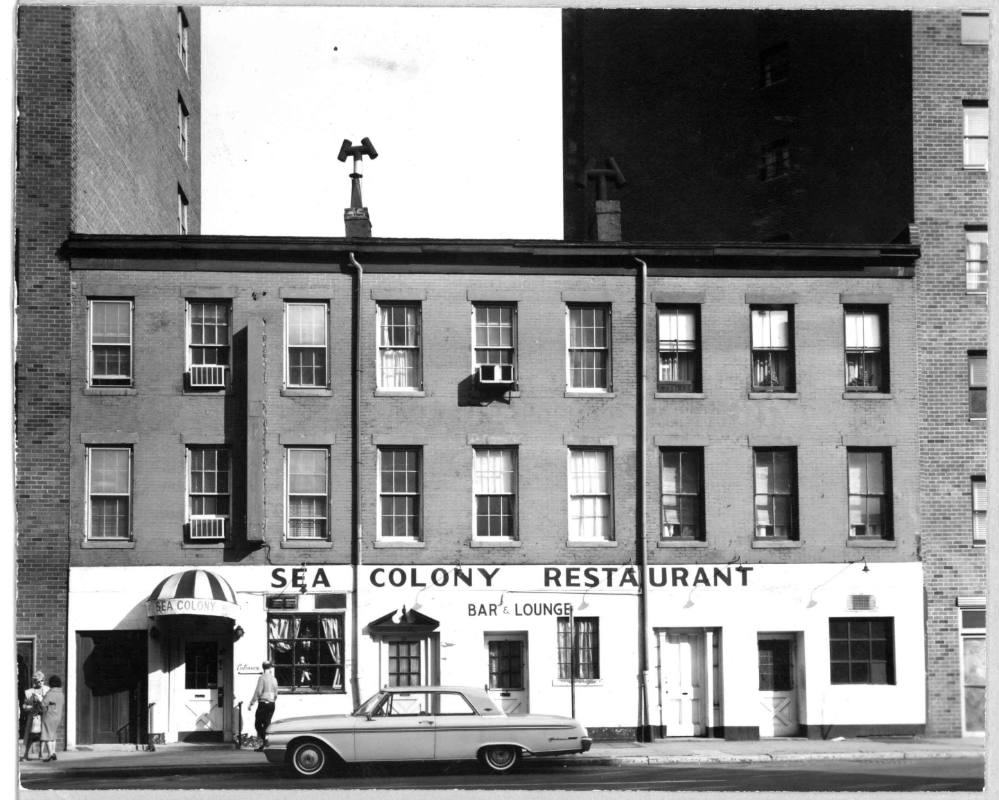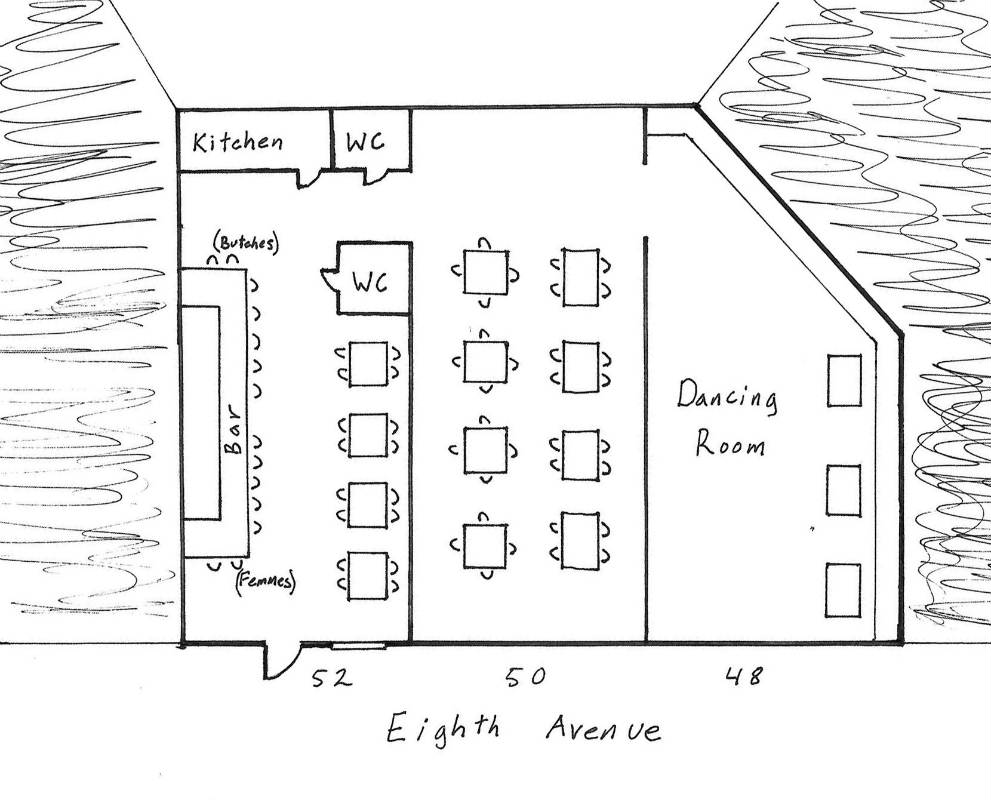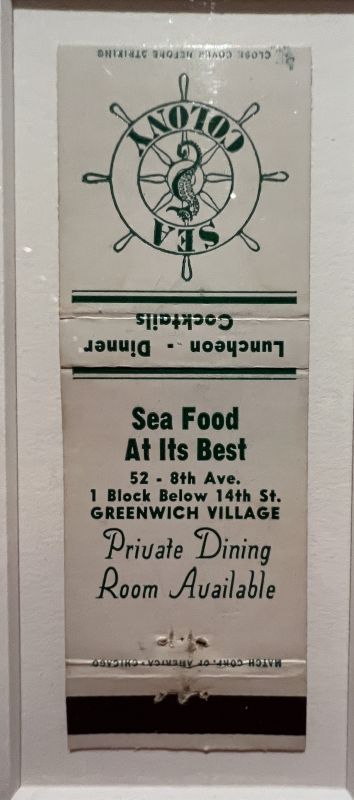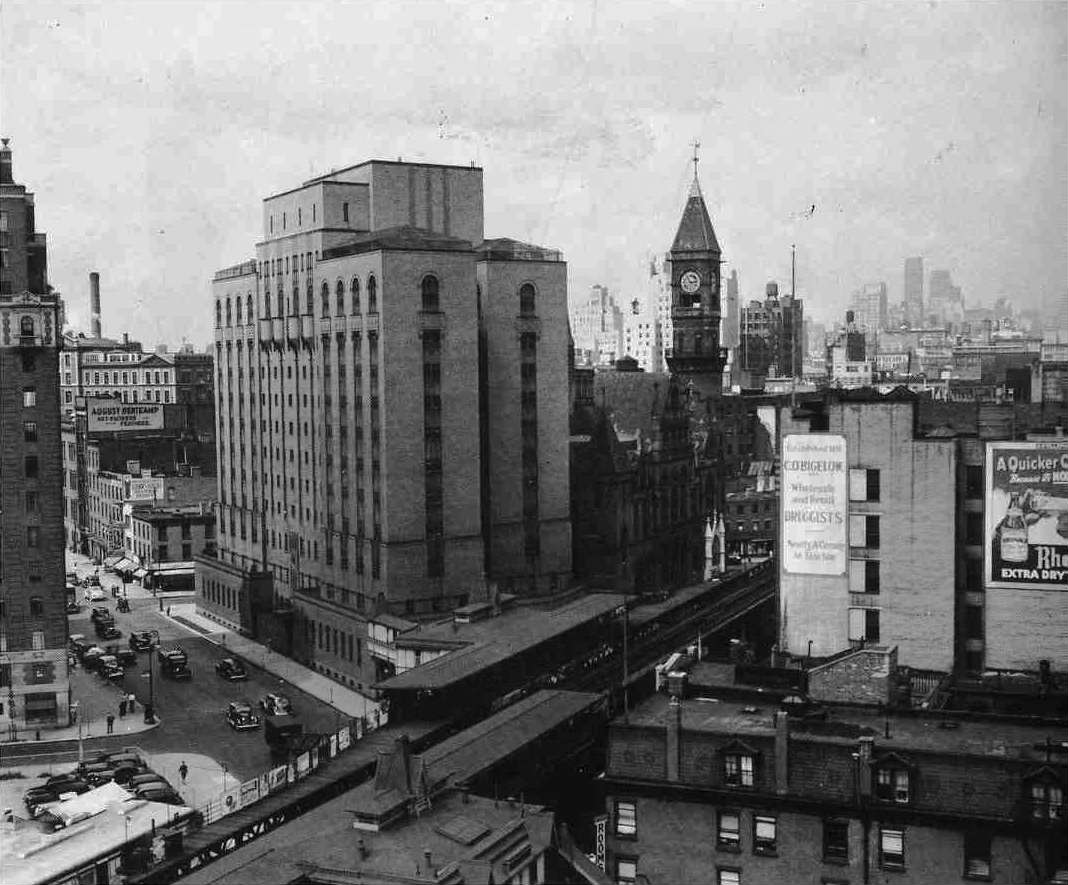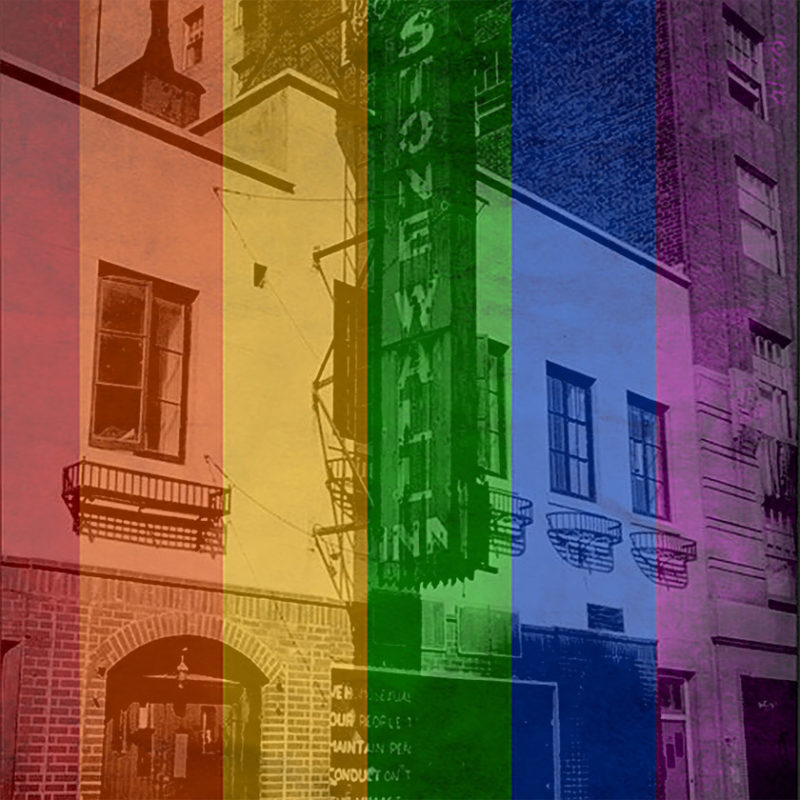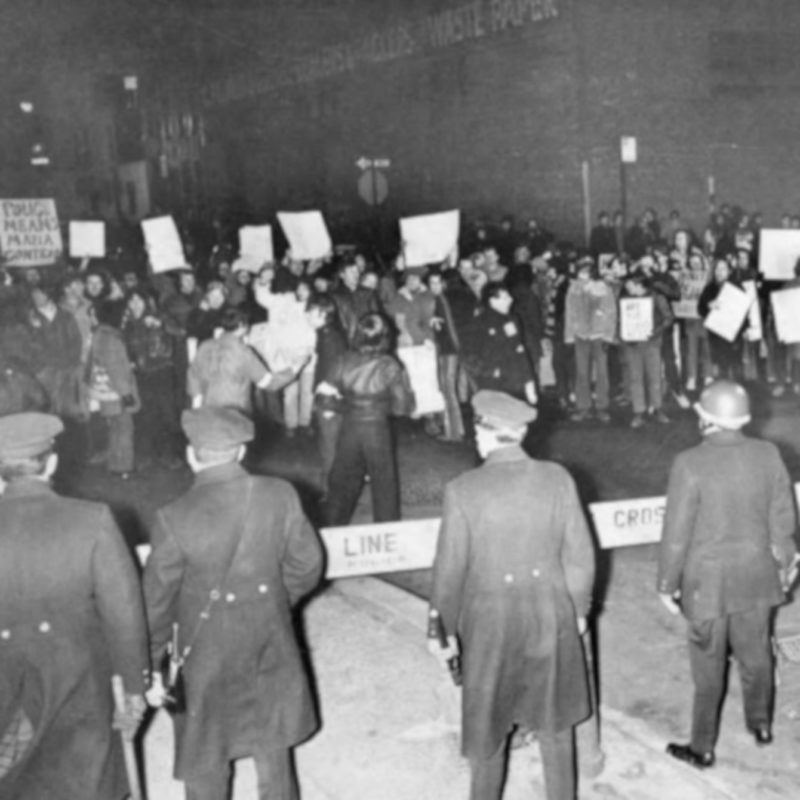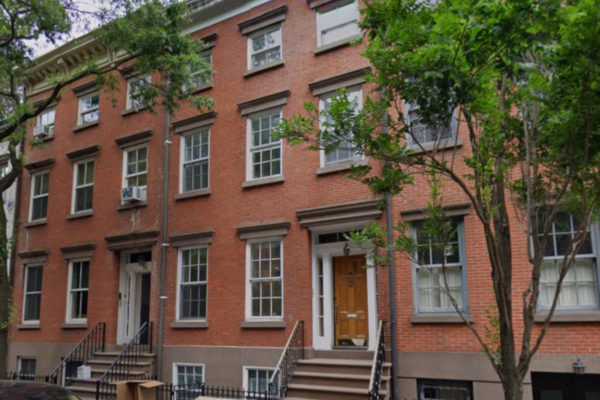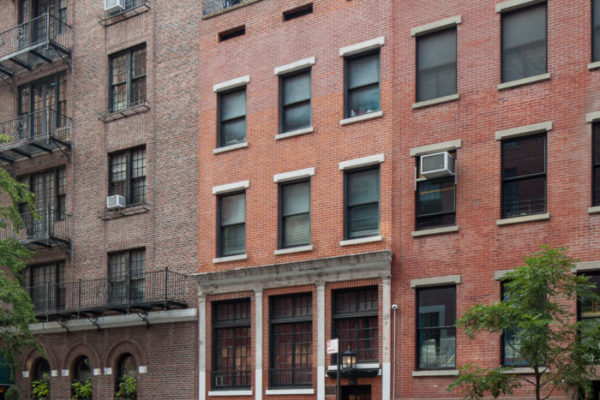overview
By at least 1955 through the 1960s, the Sea Colony was one of the most popular lesbian bars in Greenwich Village.
A favorite of author and activist Joan Nestle, among others, it was a sanctuary especially for working-class lesbians at the time, in spite of being Mafia-run and frequently raided by the police.
On the Map
VIEW The Full MapHistory
Originally opened as a restaurant c. 1950, the Sea Colony had become a lesbian hangout by at least 1955, when Ann Bannon, author of lesbian pulp fiction, visited it with Marijane Meaker, author of lesbian-themed fiction. A review of the restaurant from the same year mentioned “a recently added party room that handles 75 persons.” The review did not mention that the new room became a destination for women dancing together, an act that could get someone put in jail throughout the bar’s existence in the 1950s and 1960s. Although it was an important gathering place, especially for white working-class lesbians at the time, the Sea Colony was Mafia-run and frequently raided by the police, like many bars of the era, most famously at the Stonewall Inn.
The clientele mostly fit into a “butch-femme” dynamic, where the “butch,” or more masculine-dressing of the pair, would take the “man’s” role in the relationship – buy drinks, lead in dancing, open doors, etc. – and the “femme,” or more feminine-presenting of the pair, would take the “woman’s” role. Preston Mardenborough, a bartender at the Sea Colony in the 1960s, recalled that this dynamic even extended to where patrons typically congregated: in the front room, the back end of the bar was where the “butches” usually sat and the front was where the “femmes” sat, both gossiping about the other group. The butches were especially a target of police brutality, as dressing in clothes of the “opposite sex” was illegal in New York at the time; specifically, the “three article” rule stated that you could be arrested for wearing three or more articles of clothing that were traditionally associated with the gender that you did not seem to be. Raids on gay bars were frequent throughout the 1950s and 1960s, but were particularly violent, often sexually violent, at lesbian bars. Women arrested in bar raids were sent to the nearby Women’s House of Detention (demolished), which Joan Nestle, author and co-founder of the Lesbian Herstory Archives, said was sardonically referred to among the bar patrons as the “Country Club.”
By the 1960s, the Sea Colony was a full-time lesbian bar with three main spaces. The first space, where the main entrance at 52 Eighth Avenue was located (currently Art Bar), had the bar’s only functioning egress with uncovered windows, making it the most public. In this room, the bar was on the left and small tables were on the right as one walked in; two single-stall bathrooms were behind the bar. Nestle, who frequented the Sea Colony and has written extensively about it, recalled that only one woman was allowed in the bathroom at a time, a rule that was implemented by the Mafia “because they thought we were so sexually depraved, if two of us went in we’d probably make love, and that could bring the vice squad.” In compliance with this rule, she noted:
Every night, a short, handsome, butch woman with toilet paper wrapped around her hand, had a job to allot us toilet paper. … This butch woman would stand at the front of the line and we each got two wraps of toilet paper.
The second room (50 Eighth Avenue), in the former restaurant area, was accessible through the rear of the main bar and provided table service. The “back room” (48 Eighth Avenue) was accessible through this center space and was where the illegal dancing took place. Mardenborough recalled that when the police raided the bar, which happened weekly, a button would be pressed that turned on a red light in the “back room.” Then, he said, “Everything would freeze and people would run to their tables and just sit like they’re having drinks.”
Despite the raids, women continued visiting lesbian bars. One former regular said of her experience at the Sea Colony (her punctuation), “my first bar in the city was in the sixties at THE SEA COLONY………….its like you are in a movie as your mind opens a lens into the past…….. everyone slow danced on the floor..lights were dim….. And Maria was the bar maid/butch…who everyone wanted….she was ALL THAT!!!!….”
Entry by Gwendolyn Stegall, project consultant (June 2018).
NOTE: Names above in bold indicate LGBT people.
Building Information
- Architect or Builder: Unknown
- Year Built: 1845 (all three buildings)
Sources
“#35 One Strike,” Reply All, released August 12, 2015, https://bit.ly/2LIma74. [source of Mardenborough quote]
Angeline Acain and Susan Eisenberg, “Joan Nestle, Sixty and Sexy,” Ripe (January-February-March-April 2001 Issue, Vol. 2, No. 5), bit.ly/2kx4ZJ9. [source of Nestle pull quote]
Ann Bannon, June 15, 2018, personal interview with Gwendolyn Stegall for the NYC LGBT Historic Sites Project.
Daniel Hurewitz, Stepping Out: Nine Walks Through New York City’s Gay and Lesbian Past (New York: Henry Holt & Co., 1997), pp. 36-37.
Esther Zuckerman, “Preston Mardenborough, 68, on Looking for People from 1960s Greenwich Village on Craigslist,” The Village Voice, August 15, 2011.
Greenwich Village Historic District Designation Report (New York: Landmarks Preservation Commission, 1969), 336.
Heather Dockray, “New York’s Lesbian Bars Are Disappearing: Here’s Why Their Survival Matters,” Brooklyn Based, April 10, 2015, bit.ly/2kwwx1c. [source of E.J/Dutch, the “regular”, quote, in comments section of the article]
Joan Nestle, “Women’s House of Detention, 1931-1974,” Out History: Historical Musings, 2008, bit.ly/2H19F2X.
Preston Mardenborough, June 4, 2018, personal interview with Gwendolyn Stegall for the NYC LGBT Historic Sites Project.
“Remembering Stonewall,” Storycorps, premiered July 1, 1989, on Weekend All Things Considered, bit.ly/2xo52QW.
Robert W. Dana, “Steaks in Demand At Jack Delaney’s Sea Colony,” Tips on Tables, (1955), bit.ly/2t7MlLO.
“The Sea Colony,” Lost Womyn’s Space, June 16, 2011, bit.ly/2H1fDRg.
Do you have more information about this site?
This project is enriched by your participation! Do you have your own images of this site? Or a story to share? Would you like to suggest a different historic site?
